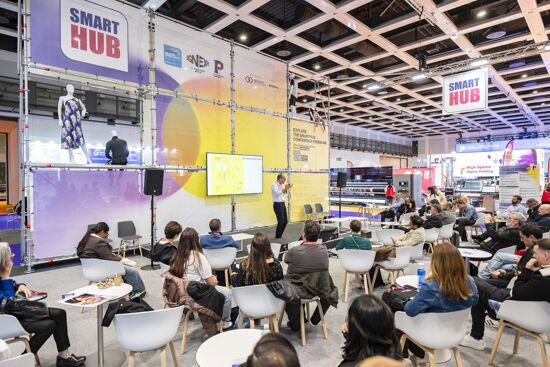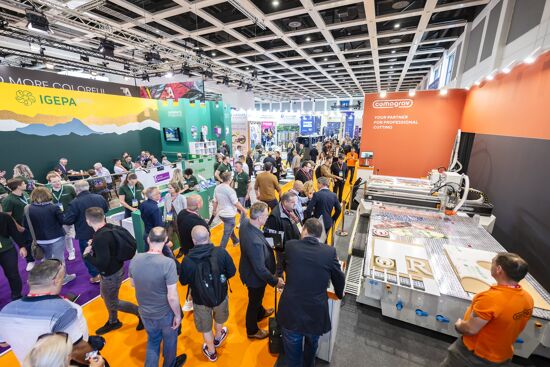Packaging technology cuts emissions
That headline might suggest some major advance in printing methods, or perhaps some clever new substrates.
But in fact the way packaging technology can reduce emissions is by taking a machete to waste volumes.
There is a lot that can be done in the supply chain to cut waste, and this is where packaging advances come into the picture. As much as 35% of food produced ends up being thrown away, either because it is too manky to offer for sale or because it has gone off while sitting on the shelf.
According to the United Nations this amounts about 1.3 billion tonnes of food per year. Wasting food also wastes the resources used to produce it in the first place. Anything we can do to get more food to market and consumers in a fit state for use has to be a good thing. But it isn’t all we can do.
We can make much better use of the food we produce and do manage to get into the shops, especially in developed markets. For a start we can stop buying more food than we are likely to consume, so that we don’t let it rot in the fridge only to be thrown in the bin.
Apart from being a waste of money, overbuying of foodstuffs encourages us to eat more than we need, so we get fat as well as being wasteful.
Time is a constant series of changing events so the graphics industry needs to keep up with advances in packaging and of how packaging is perceived. Contrary to popular opinion packaging is not necessarily a source of waste. The primary purpose of food packaging should be to protect and preserve foodstuffs, so that they last as long as possible.
Shrink wrapping food prevents oxidation. Oxygen is a major cause of decay so if we can keep oxygen away from the food, it is likely to last longer. This applies to all types of foods from meat (which apparently gets tenderised as a result of being shrinked wrapped) and cheeses, through to vegetables packaged in individual portions.
An increasing number of food retailers in developing markets rely on shrink wrapping to lengthen the selling window for perishable goods.
The process involves heat applied with a heat gun or more commonly in a heated chamber, to polyolefin. This polymer is extremely heat sensitive so there is no risk that the food it contains starts cooking. It can be applied in several layers which may or may not cross-link depending on the material.
Either way the resulting package is robust, resistant to bugs and blocks exposure to oxygen, ensuring that foods is not contaminated.
With every tonne of food waste we produce, we increase the planet’s carbon footprint. Rather than seeing packaging as a source of waste, we should encourage people to recognise that it reduces waste and can ensure that more food reaches peoples’ plates. Something to chew on.
Topics
Interested in joining our community?
Enquire today about joining your local FESPA Association or FESPA Direct
Recent news

Industry Experts Explore the Evolution of Smart Manufacturing in the Textile Industry
A FESPA SmartHUB roundtable at Personalisation Experience 2025 discussed smart manufacturing's transformative impact on the textile industry. Experts highlighted the shift to on-demand customisation, driven by digital printing, data analytics, and automation. Key takeaways included enhanced machine control, significant waste reduction through intelligent software and colour management, and improved sustainability via energy efficiency and near-shoring, ensuring agility and environmental responsibility in textile production.

FESPA 2025 gathers leading visionaries from across the speciality print industry in Berlin
FESPA Global Print Expo 2025, European Sign Expo and Personalisation Experience (6 – 9 May 2025, Messe Berlin, Germany) welcomed Visionaries from across the speciality print industry to shape the future of print, develop forward-thinking business strategies, and explore innovative ways to translate emerging industry trends into tangible growth opportunities.

Exploring Cutting-Edge Textile Printing Innovation with Adobe Print Engine 7
Adobe PDF Print Engine 7, launched at FESPA Global Print 2025, significantly advances textile printing. Debbie McKeegan shares how it automates non-white substrate management and RGB colour handling, expands colour gamuts with in-RIP multicolour transparency blending, and streamlines workflows for efficiency and sustainability. This update boosts customisation, reduces waste, and positions businesses at the forefront of digital print innovation.

FESPA Global Print Expo 2025 - Overall Highlights
FESPA Global Print Expo, Europe's leading print and signage exhibition returned to Messe Berlin from 6 - 9 May 2025.